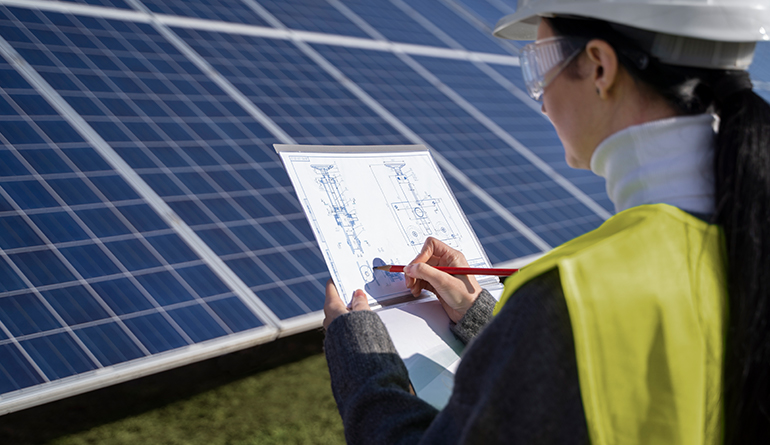
Solar Project Survey
Site Assessment: Surveyors evaluate potential sites for solar energy projects, considering factors such as solar resource availability, shading, terrain, land use, environmental impact, local regulations, and proximity to existing infrastructure.
Solar Irradiance Measurement: Assessing the solar irradiance levels at the site using tools like pyranometers or satellite data to determine the solar energy potential and optimize the placement of solar panels for maximum energy generation.
Topographic Survey: Mapping the site’s topography to identify potential obstacles, slopes, drainage patterns, and other site characteristics that may impact solar panel placement, orientation, and structural design.
Shading Analysis: Conducting shading analysis to identify potential obstructions such as trees, buildings, or terrain features that could cast shadows on solar panels and reduce energy production. This helps optimize panel placement and avoid shading losses.
Electrical Infrastructure Assessment: Evaluating the existing electrical infrastructure at the site to determine the feasibility of connecting the solar energy system to the grid or off-grid electrical systems. This includes assessing voltage levels, available capacity, and interconnection requirements.
Environmental Survey: Solar projects may require environmental impact assessments to identify and mitigate potential ecological sensitivities. Surveys may include assessments of habitats, water resources, wildlife, vegetation, and cultural heritage sites, as well as compliance with regulations related to environmental protection and permitting.
Permitting and Regulatory Compliance: Identifying and understanding local permitting requirements, zoning regulations, building codes, and other regulatory considerations necessary for obtaining approval and ensuring compliance with legal and regulatory standards.
Financial Analysis: Conducting a financial analysis to assess the economic feasibility and viability of the solar project, including estimating the costs, potential energy savings, return on investment (ROI), incentives, tax credits, and financing options.
System Design and Engineering: Developing detailed system designs, including solar panel layout, mounting structures, electrical wiring, inverters, monitoring systems, and safety measures, based on the site assessment findings and project requirements.
Construction Planning: Developing a construction plan outlining the timeline, resources, logistics, safety protocols, and quality control measures for the installation of the solar energy system.

